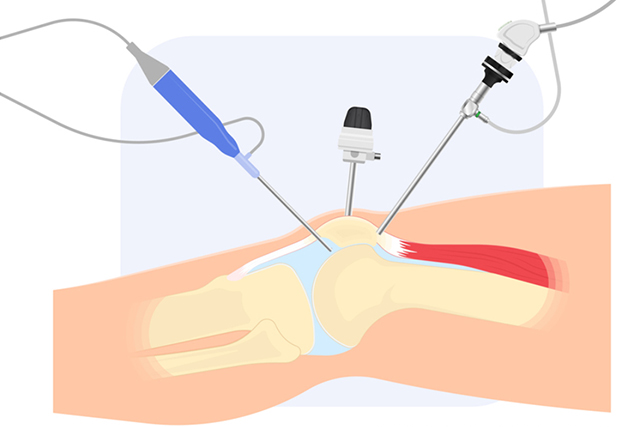Meniscal Repair

What is a Meniscal Repair?
Meniscal Repair in Sarjapur Road Bangalore is a surgical procedure performed to repair a torn meniscal cartilage in the knee. The meniscus is a C-shaped cartilage that lies between the thigh bone and the shin bone. It acts as a shock absorber and protects the bone surfaces of the joint. Meniscal repair surgery is usually performed using minimally invasive arthroscopic techniques.
How does a Meniscal Tear Occur?
A meniscal tear may be caused by:
- Forceful rotation of the knee
- Rapid pivoting or sudden stopping
- Deep squatting
Symptoms of Meniscal Tear
Knee pain and swelling that worsen with weight-bearing activities, along with a catching or locking sensation in the knee, are common symptoms of a meniscal tear.
When is Meniscal Repair Recommended?
Meniscal repair may be recommended in cases of:
- Young or active individuals who maintain an active lifestyle
- Injury to the peripheral zone of the meniscus
- Good-quality meniscal tissue despite the injury
What happens if a Meniscus Tear is left untreated?
An untreated meniscus tear can lead to knee instability, pain, and swelling, and may eventually result in knee arthritis.
Preparing for Meniscus Repair
You will receive specific instructions from Dr. Laxman. In general, you may be advised to:
- Inform Dr. Laxman about your current medications and allergies
- Undergo certain tests to ensure you are fit for surgery
- Follow Dr. Laxman’s instructions regarding medications and fasting before surgery
What happens during Meniscal Repair?
The surgery is usually performed under spinal anaesthesia. Small keyhole incisions are made around the knee through which an arthroscope and specialized surgical instruments are inserted. The arthroscope provides Dr. Laxman with a magnified view of the inside of the knee. Dr. Laxman examines the damaged meniscus, assessing the severity of the tear and the quality of the meniscal tissue. The torn edges are smoothened using a shaver, and special techniques are used to improve blood supply to the meniscus. Sutures or fixation devices are then used to secure the meniscus. The incisions are closed, and a surgical dressing is applied.
Recovery after Meniscus Repair
After arthroscopic surgery, most patients can return home on the same day or after an overnight stay. Medications are prescribed to control post-surgical pain and swelling. The use of crutches and a knee brace may be required for up to a month. You will receive instructions on wound care and daily physiotherapy exercises to help speed up recovery. Full return to pre-injury activity levels may take three months or longer.
Risks of Meniscus Repair
Meniscus repair is a very safe procedure that improves knee stability and function. However, minimal risks include infection, bleeding, delayed healing, and failure of the repair.
FAQs
The meniscus plays a vital role in absorbing shock during daily activities, making it susceptible to injury. Meniscus repair can restore knee function and help you return to your normal routine. Below are answers to some common questions about meniscus repair and how Dr Rewat can help.
What is Meniscus Repair Surgery?
Meniscal Repair in Koramangala Bangalore is a type of arthroscopic surgery performed to repair the torn portion of the meniscus. During the procedure, the surgeon sutures the torn edges together, allowing the meniscus to heal properly.
It is performed arthroscopically (keyhole surgery) and is usually a day-care procedure.
What are the Symptoms of a Meniscus Tear?
Symptoms of a meniscus tear may include:
- Popping or clicking sensation
- Pain
- Swelling
- Knee stiffness
- Inability to fully straighten the knee (locked knee)
What are the Benefits of Meniscus Repair Surgery?
The meniscus helps transmit nearly half of the load through the knee when straight and up to 85% when the knee is bent at 90 degrees during daily activities. Repairing the meniscus reduces pressure on the articular cartilage and lowers the risk of developing arthritis.
What is the Recovery Process Like?
Recovery requires protecting the knee while the meniscus heals. Patients are usually advised to wear a knee brace for the first few weeks after surgery.
Will I Need Physical Therapy?
In most cases, yes. Physical therapy after surgery helps to:
- Reduce swelling
- Regain quadriceps muscle control
Physiotherapy plays a key role in reducing recovery time and restoring knee function.
